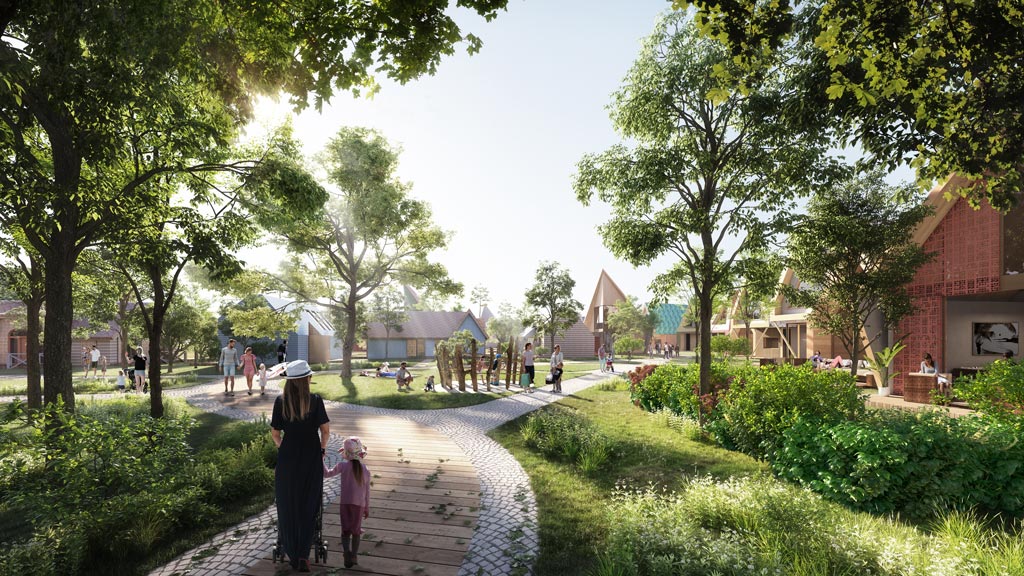Climate Action & Sustainability

NVIDIA

First United Bank

The Lighthouse

Sustainable Shade Structures

Rancho Los Amigos – Harriman

Under Armour Global Headquarters

San Francisco International Airport, T1 Net Zero Program

10 Gresham Street

Springdale Green

LinkedIn Omaha

American Physical Therapy Association Headquarters

CSULB Parkside North Residence Hall and Housing Administration Building

The Link

The Acre

Torre Universal Sustainability

Café Britt Headquarters

citizenM

Walmart Home Office

Holt Renfrew Sustainable Guidelines

UPCycle

Centro de Convenciones de Costa Rica

CSU Northridge Student Sustainability Center

Houston Advanced Research Center (HARC)

Etsy

U.S. General Services Administration, Federal Office Building

Santa Monica College Core Performance Center

The 600-Year Office

Severe Weather: The New Design Imperative

COP28 Wrap Up: Bringing People Together for Global Collective Change

COP28 Day 3 Recap: Designing for a More Resilient Future

COP28 Day 2 Recap: Leading the Way to Smarter, Greener Cities

COP28 Day 1 Recap: Decarbonizing the Built Environment Is a Global Priority

The Carbon Footprint of Work

Feng Shui Meets Sustainability: 5 Ideas for a Greener Future

COP28

Ecological Urbanism Is the Future for Cities in the GCC

Second Summer: Adaptable Shading Solutions for Unpredictable Seasons

Embodied Carbon Is Where Tech Must Tighten Its Belt
_1696008302.jpg)
Global Climate Action Survey 2023

Extreme Weather Demands an Immediate Design Response

5 Strategies for Heat Resilient Design
Extreme weather events are driving demand for resilient design at scale.
The rapid acceleration of climate change is emphasizing the need for immediate design responses at the city and building scale to cope with extreme weather such as floods, storms, and heat waves. Architects, developers, and urban designers should embed resilient design at the outset of projects and pilot solutions that can be scaled over time.
Companies will increasingly incorporate social sustainability into their business strategies.
Social sustainability is the goal of creating a more equitable and just society, including factors such as fair labor practices, human rights, and community engagement. Beyond the narrow focus on net zero carbon, companies can take a holistic action-based approach to sustainability that considers their environmental and social impact.
Policy requirements and stakeholder expectations will place greater focus on transparent carbon reporting.
Investors, occupiers, and other stakeholders are demanding greater transparency from companies about their environmental impact. Coupled with tighter disclosure regulations from governments, carbon output reporting will no longer be voluntary. To create a robust carbon reporting strategy, organizations should define clear, output-driven sustainability goals and metrics tied to their business strategy.


Anthony Brower

Juliette Morgan

Kirsten Ritchie

How Pursuing Green and Wellness Certifications Can Add a Positive Branding Boost

How Gensler Is Pioneering Best Practices for Making the Built Environment Healthier and More Sustainable

Curbed Featured the Recently Revealed Google’s St. John’s Terminal in NYC

The 2024 Women in Sustainability Leadership Awards Recognized Gensler Sustainability Director Mallory Taub

How Companies Are Prepping for California’s New Climate Emissions Law

Gensler’s Andy Cohen on How the Buildings and Cities of the Future Can Achieve Net Zero

An In-Depth Conversation With Gensler’s Anthony Brower on Creating Impactful Building Designs

The Pros and Cons of Building With Precast Concrete

Gensler

How Design Can Help Reduce Overheating in Cities

How To Mitigate Extreme Heat in Vulnerable Communities

Strategies Architects Are Using To Redesign Buildings for Extreme Heat

What Sustainable Cities of the Future Could Look Like

Why Embodied Carbon of Building Materials is Key to Achieving Net Zero Carbon Emission Targets

Gensler’s Katie Mesia Highlights a Growing “Tidal Wave” of Interest in Mass Timber Construction
